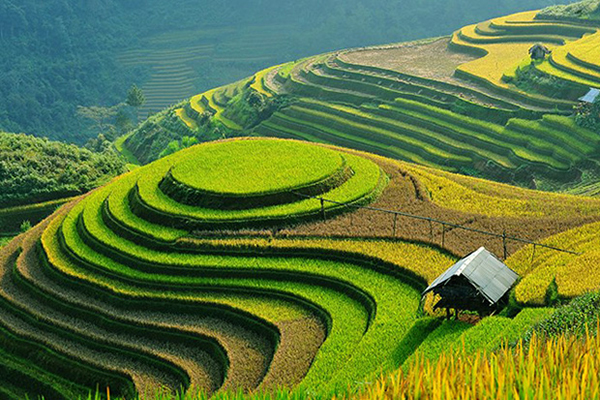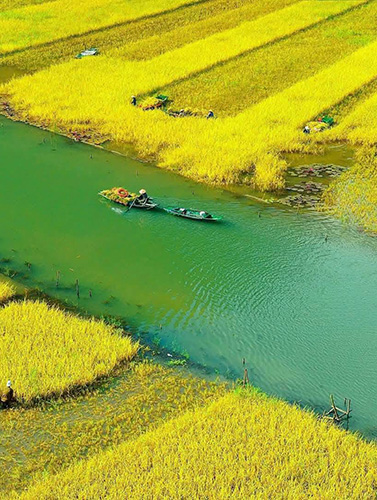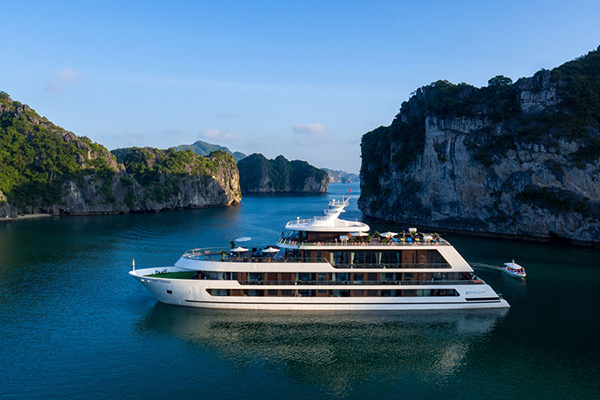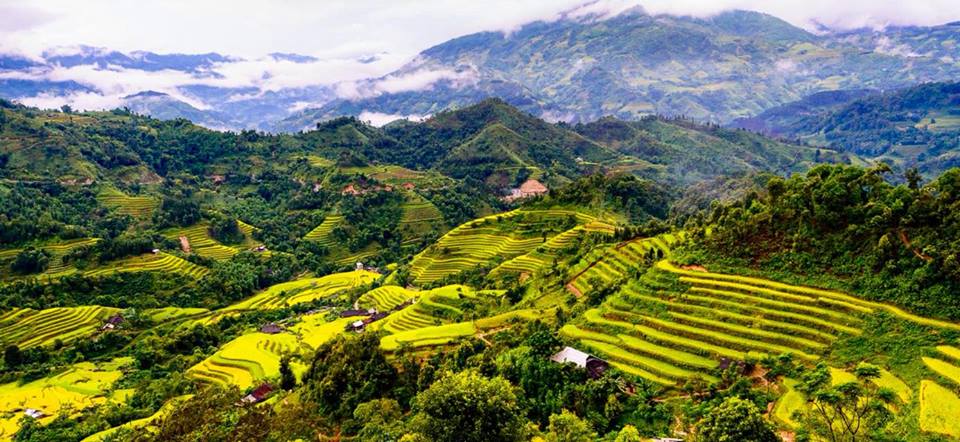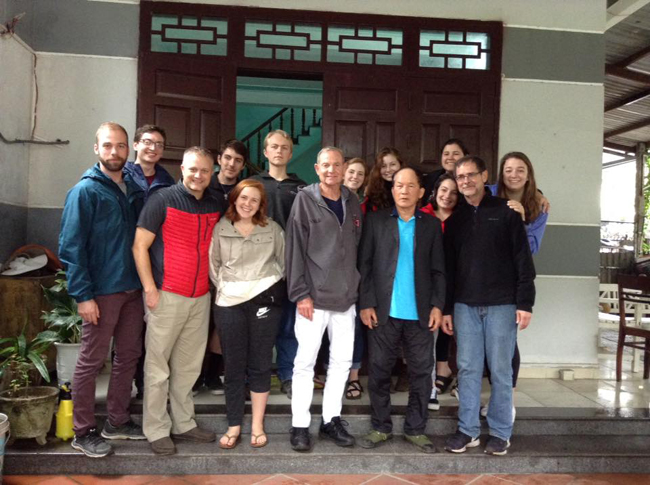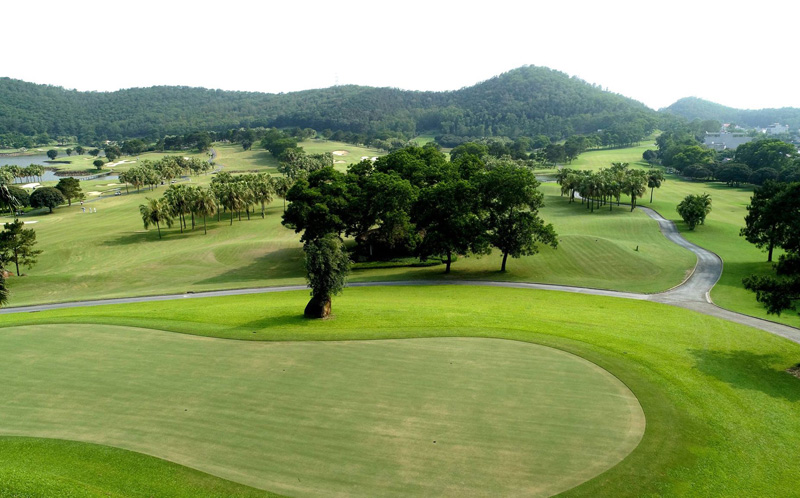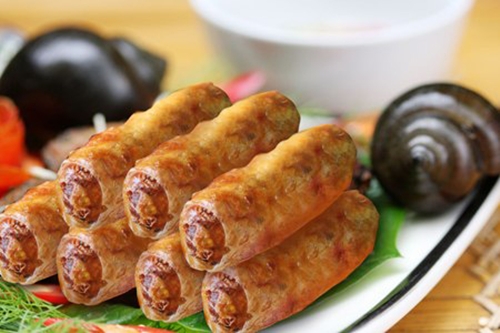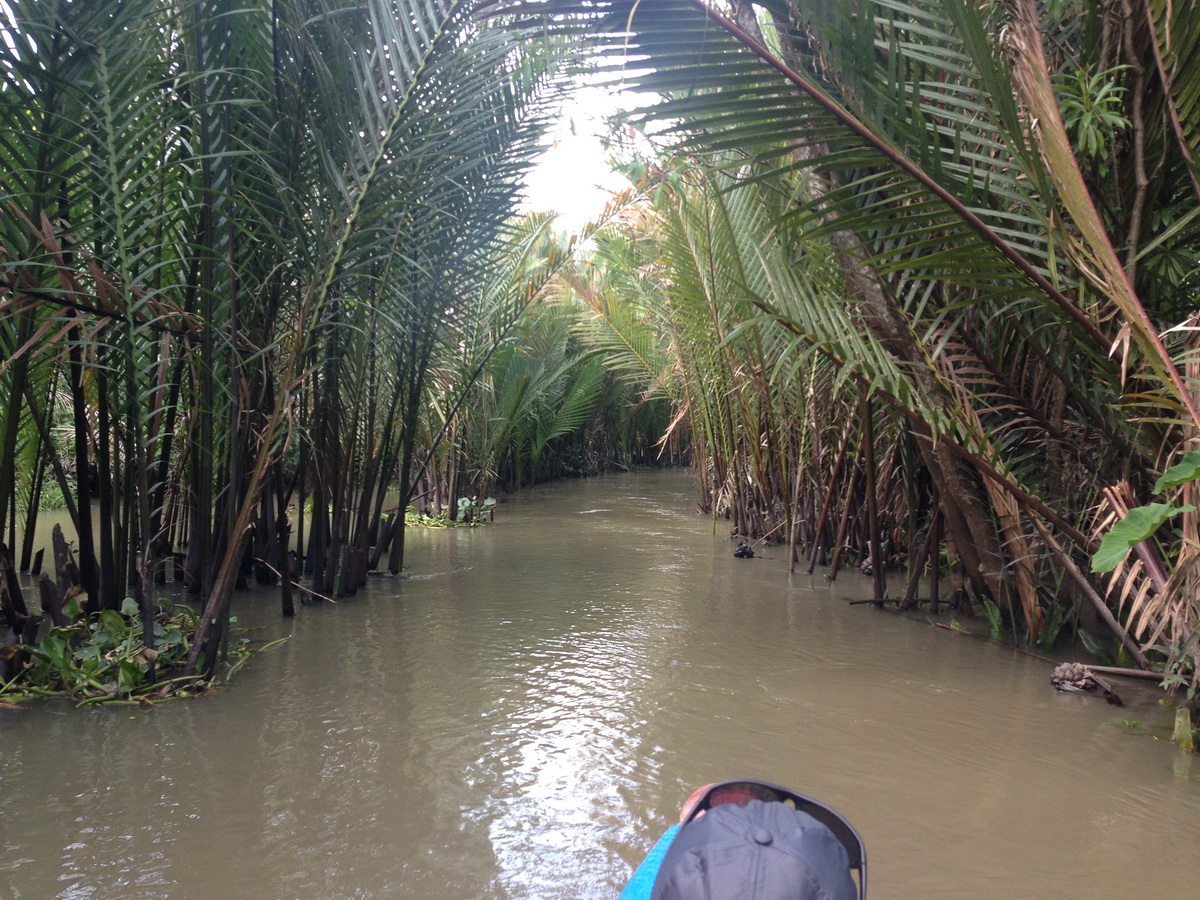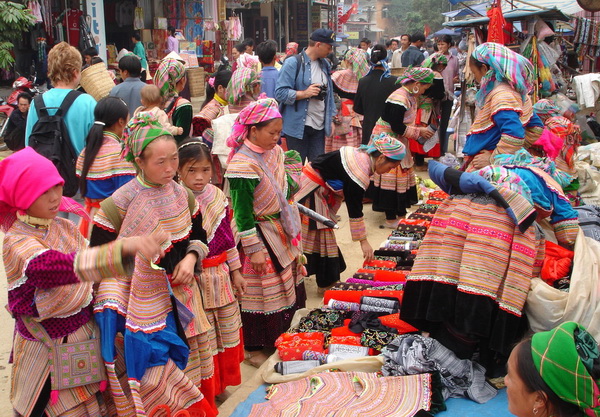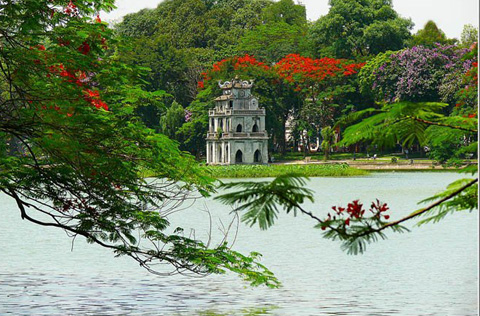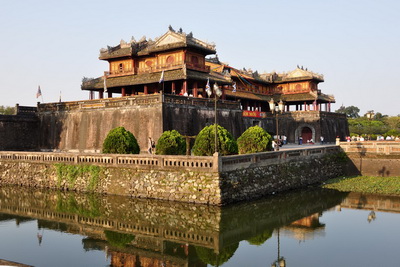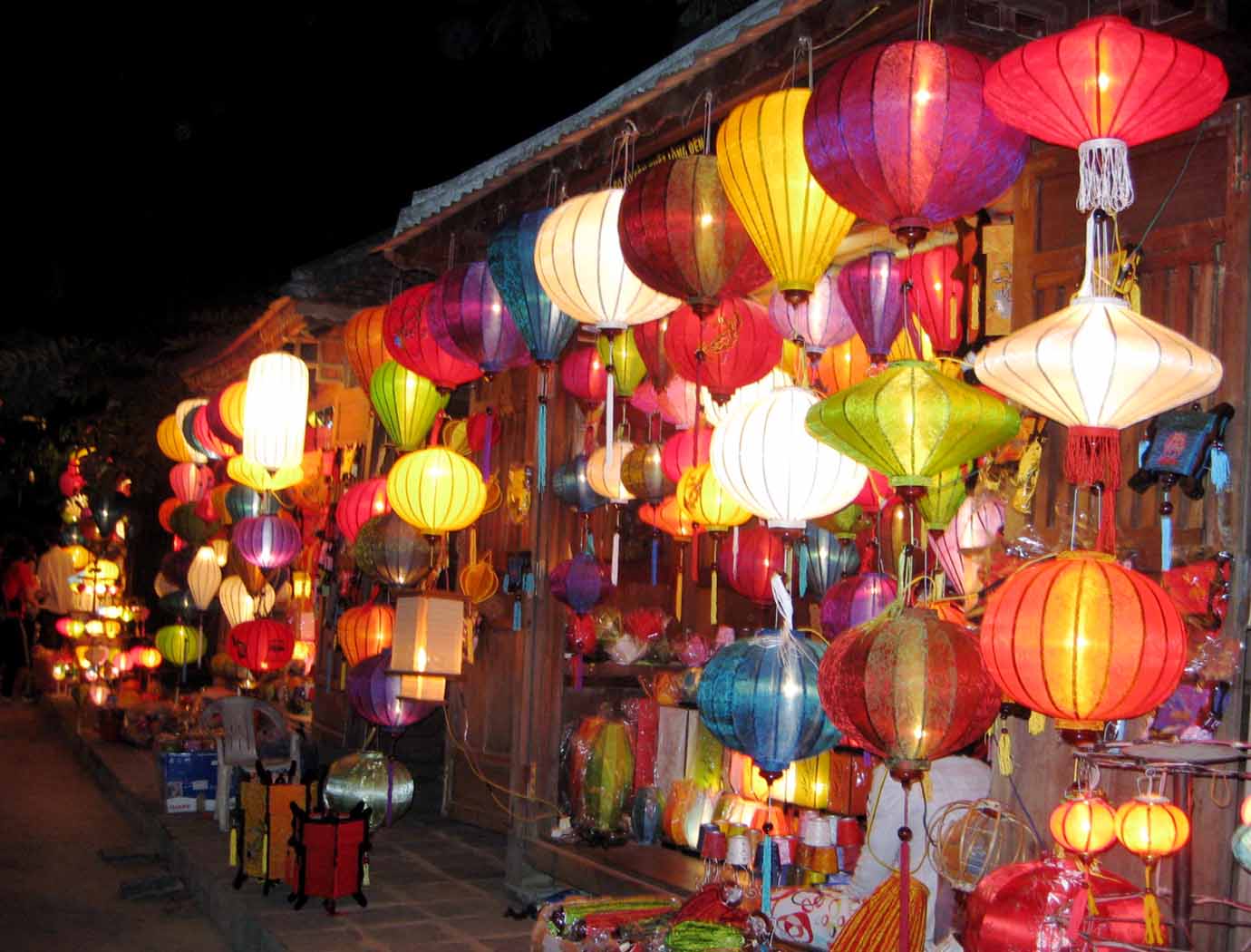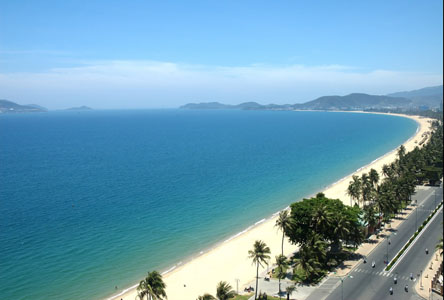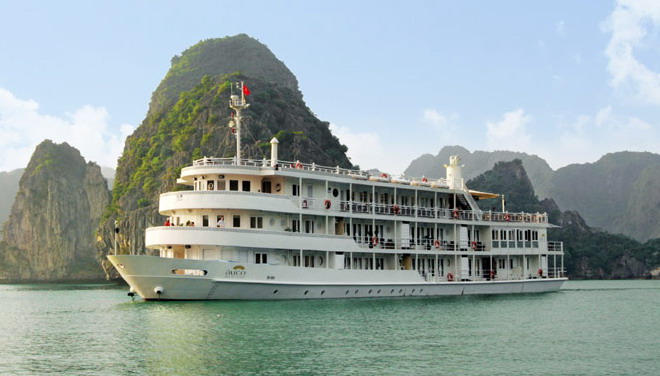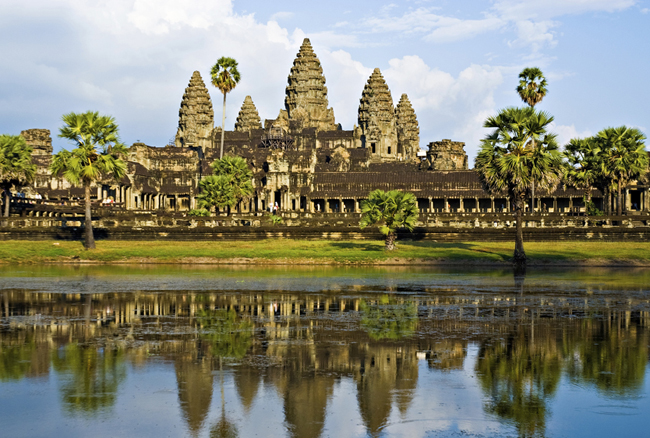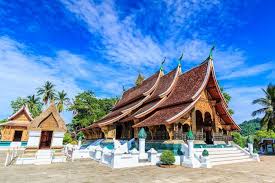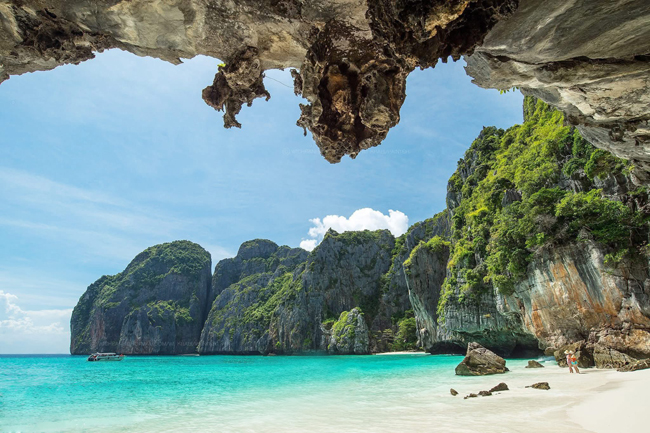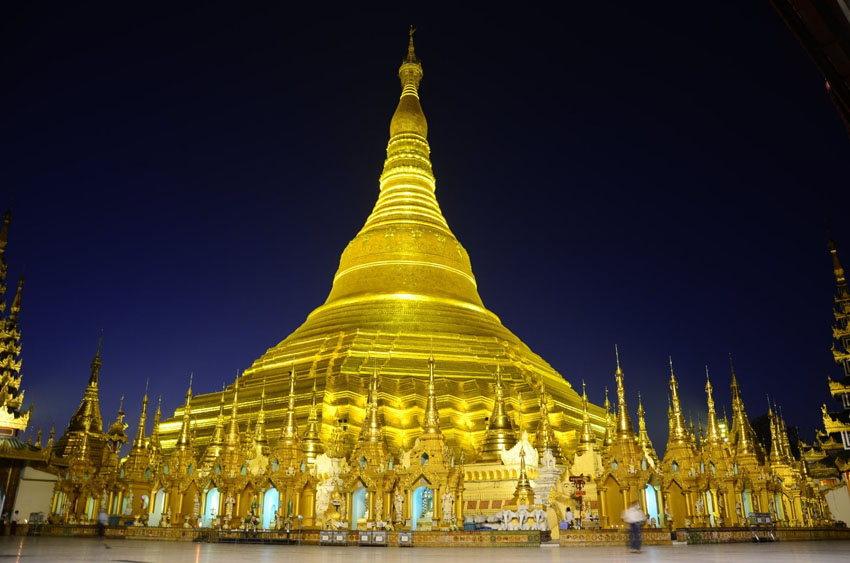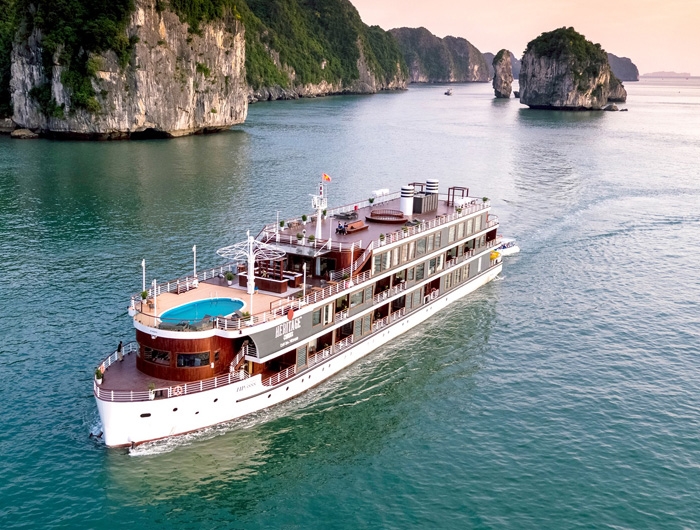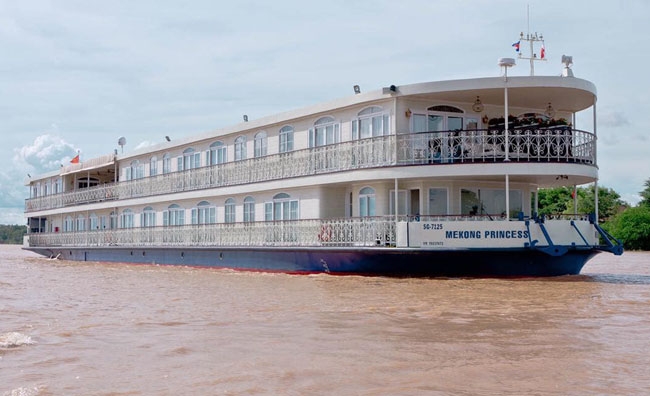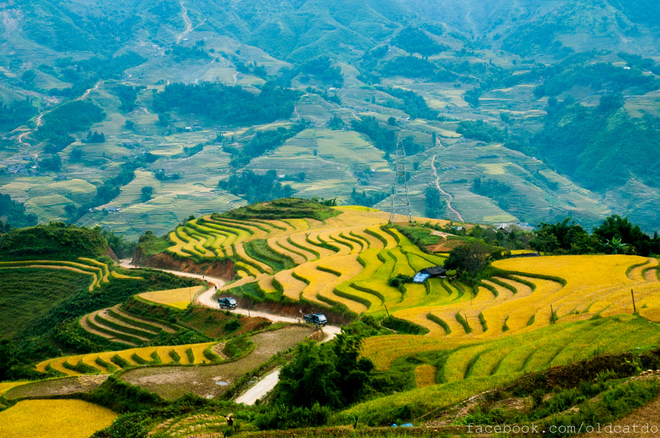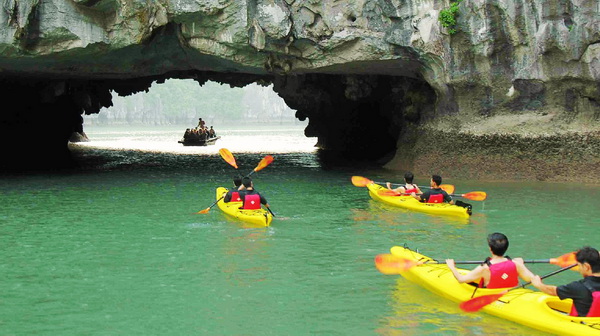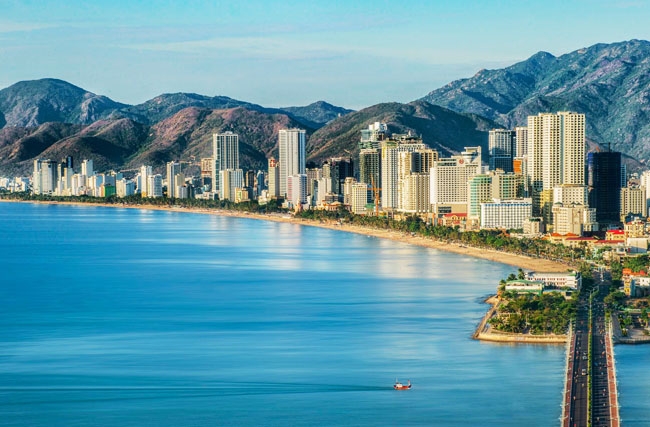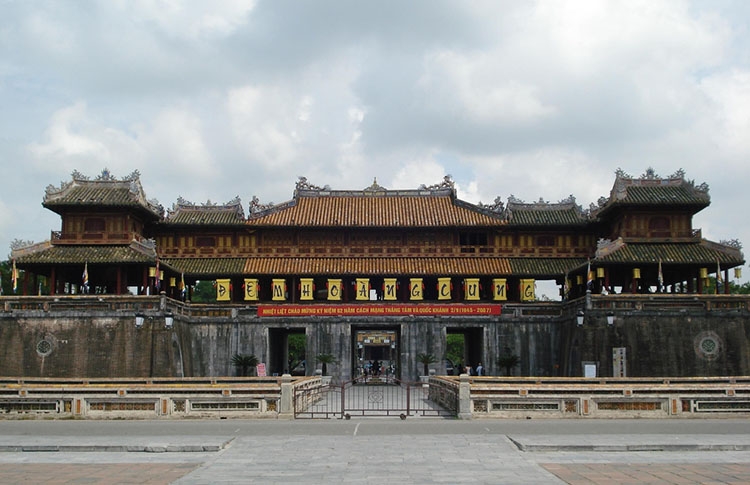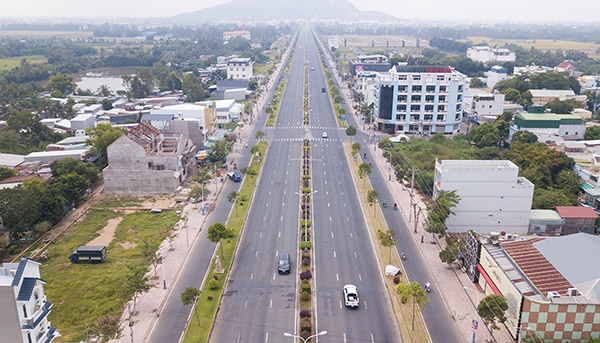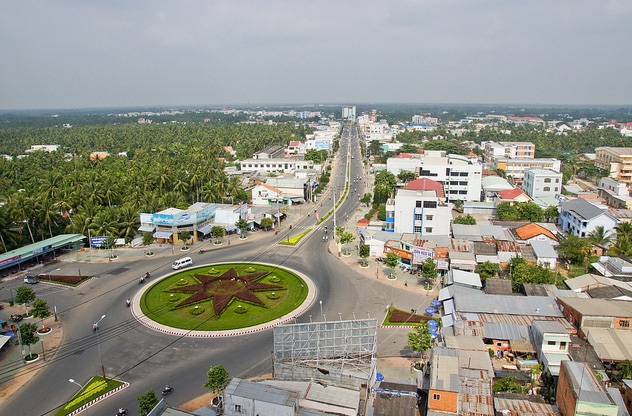Sapa
Sapa is a famous tourist destination in Lao Cai province, north west of Vietnam, about 380 km from Hanoi. It is favoured with spectacular natural landscapes, immense mountain ranges of Hoang Lien Son, hilly topography, greeny forests and rich culture with the appearance of various ethnic minorities.
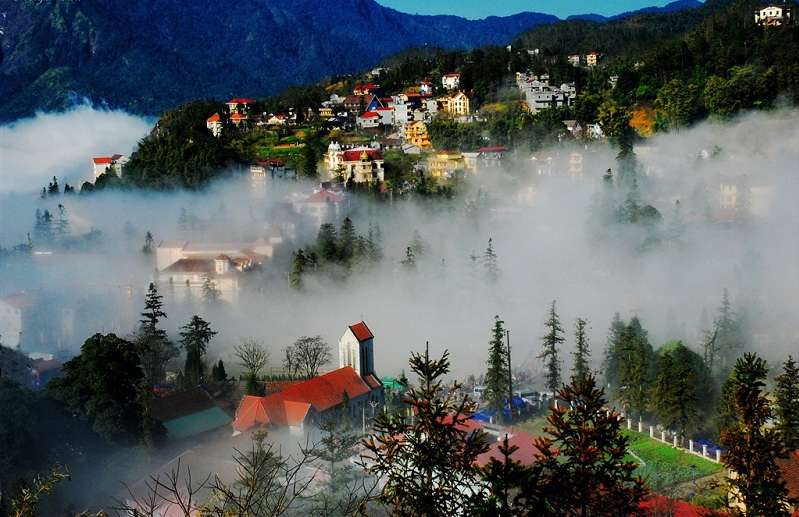
Sapa town in the cloud
Area: 681,37 km²
Population: 81.857 (2018)
GEOGRAPHY
Sapa is in Lao Cai Province, in the North West of Vietnam, It's about 35kms from Lao Cai Province Center and about 380 kms from Hanoi. Bordering with Bao Thang District and Lao Cai City to the East, Lai Chau Province to the West, Tan Uyen District of Lai Chau to the South, Van Ban District to the South and Bat Xat District to the North.
This is a mountain town which is about 1600 meters above the sea level, Hoang Lien Son Mountain Range cover the most part of North and West Sapa in the Hoang Lien National Park.
WEATHER AND CLIMATE
At the height of about 1600 meters above sea level, Sapa has temperate and semi tropical climate with annual average temperature at 15 degrees Celsius. The coldest months are Dec, Jan and Feb with the average temprate is about 6°C, Sometimes It becomes colder at about -2 or -3 °C . The hottest season is from June to August with average tempature is about 22 °C , the highest temprature is about 29 °C.
Once coming here, you will be stunned with various weather of a day: cool in the morning, sunny and warm at noon, cloudy and foggy in the afternoon and chilly cold in the evening. Sapa is among the few places which snows in winter in Vietnam.
The good time to visit Sapa is in late spring and autumn, between March and May, when it clears and the whole town is covered with blossoming plum, peach and apricot flowers drawing a picturesque and paramount romantic scenery for Sapa. In September, once can be completely attracted by endless rice terraced fields on the hills embraced the little town.
The rainy season starts from May until August, and from December until March. it is very cold and wet with rain and fog from Dec until Feb.
TRANSPORTATION
By Bus: There are alot of local buses or touirst buses from Hanoi to Sapa every day, It takes about 5,5 hours by bus. There are also other local buses from Lao City and Lai Chau City to Sapa.
By Train: There are day trains and night trains from Hanoi to Lao Cai Station everyday with many kinds of trains from local to luxury trains for the tourists. After arriving in Lao Cai Trai Station, you can go to Sapa by local buses, tourist buses or taxi...
ETHNICS
There are 6 ethnic groups living in Sapa. The Black Hmong people is 51,65%, Red Dao is 23,4%, Kinh people is 17,91%, Tay people s 4,74% and Xa Pho is about 1,36%, Most of King people live in Sapa Center and other minorities live in villages along Muong Hoa Valley and Hoang Lien Mountain range. At every weekend they will go to the local market in Sapa for trading and have parties together.
TRADITIONAL FESTIVALS
Sapa is home for six different ethnic groups living together: Kinh, Hmong, Red Dzao, Tay, Giay and Xa Pho, most of the ethnic groups live along Muong Hoa Valley . Coming to Sapa in the beginning months of the Vietnamese Lunar Year (normally in January or early February), visitors will have chance to attend some of the most gripping festivals in the area.
Population: 81.857 (2018)
GEOGRAPHY
Sapa is in Lao Cai Province, in the North West of Vietnam, It's about 35kms from Lao Cai Province Center and about 380 kms from Hanoi. Bordering with Bao Thang District and Lao Cai City to the East, Lai Chau Province to the West, Tan Uyen District of Lai Chau to the South, Van Ban District to the South and Bat Xat District to the North.
This is a mountain town which is about 1600 meters above the sea level, Hoang Lien Son Mountain Range cover the most part of North and West Sapa in the Hoang Lien National Park.
WEATHER AND CLIMATE
At the height of about 1600 meters above sea level, Sapa has temperate and semi tropical climate with annual average temperature at 15 degrees Celsius. The coldest months are Dec, Jan and Feb with the average temprate is about 6°C, Sometimes It becomes colder at about -2 or -3 °C . The hottest season is from June to August with average tempature is about 22 °C , the highest temprature is about 29 °C.
Once coming here, you will be stunned with various weather of a day: cool in the morning, sunny and warm at noon, cloudy and foggy in the afternoon and chilly cold in the evening. Sapa is among the few places which snows in winter in Vietnam.
The good time to visit Sapa is in late spring and autumn, between March and May, when it clears and the whole town is covered with blossoming plum, peach and apricot flowers drawing a picturesque and paramount romantic scenery for Sapa. In September, once can be completely attracted by endless rice terraced fields on the hills embraced the little town.
The rainy season starts from May until August, and from December until March. it is very cold and wet with rain and fog from Dec until Feb.
TRANSPORTATION
By Bus: There are alot of local buses or touirst buses from Hanoi to Sapa every day, It takes about 5,5 hours by bus. There are also other local buses from Lao City and Lai Chau City to Sapa.
By Train: There are day trains and night trains from Hanoi to Lao Cai Station everyday with many kinds of trains from local to luxury trains for the tourists. After arriving in Lao Cai Trai Station, you can go to Sapa by local buses, tourist buses or taxi...
ETHNICS
There are 6 ethnic groups living in Sapa. The Black Hmong people is 51,65%, Red Dao is 23,4%, Kinh people is 17,91%, Tay people s 4,74% and Xa Pho is about 1,36%, Most of King people live in Sapa Center and other minorities live in villages along Muong Hoa Valley and Hoang Lien Mountain range. At every weekend they will go to the local market in Sapa for trading and have parties together.
TRADITIONAL FESTIVALS
Sapa is home for six different ethnic groups living together: Kinh, Hmong, Red Dzao, Tay, Giay and Xa Pho, most of the ethnic groups live along Muong Hoa Valley . Coming to Sapa in the beginning months of the Vietnamese Lunar Year (normally in January or early February), visitors will have chance to attend some of the most gripping festivals in the area.


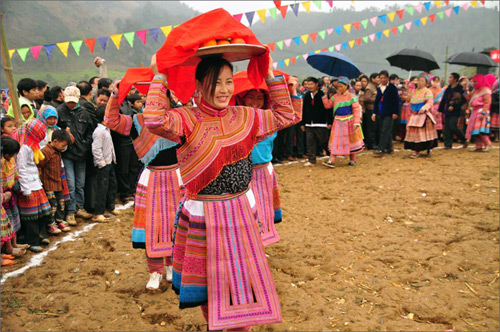
Roong Pooc festival Dancing performance of Giay women Gau Tao festival of Hmong tribe
Roong Pooc of the Giay
Taken place on the Dragon day of Lunar January in the ravishing Ta Van village, Roong Pooc festival is the special occasion when the Giay celebrate new year and pray for a coming abundant harvest, favorable weather and peaceful life. The Roong Pooc festival attracts visitors with its special rituals and ebullient traditional performances.
The Dancing Tet of the Dzao
The most important festival of the year is organized on the first or second of the Lunar New Year in Ta Van village, with very careful and lots of preparation. The festival shows the gratitude of the Dzao people to their ancestors, besides a pray for good luck and happiness in new year. There are 14 typical traditional dances performed by seriously selected village boys and unique etiquettes by the local priest.
The Sweeping Festival of the Xa Pho
This special event is organized on every Horse day, Goat day or Human day of Lunar February with the meaning of happy and peaceful life, healthy cattle and good harvest. On this day, the villagers bring various offerings such as pigs, chickens, goats, dogs, or rice, … to dedicate to the ghosts. A priest will host the festival and humble the praying songs while people around dancing and singing with their painted faces. Afterward, all the offerings must be finished without bringing into the village.
The Gau Tao Festival of the Hmong
Being one of the most important spiritual activities of the Hmong, the Gau Tao festival is organized at the beginning of the Lunar New Year. In the festival, a priest will be invited to the local’s house to pray for their good health, good luck or children.
The Opening Harvest Festival of the Tay and Dzao
One of the biggest and most fascinating fests in Sapa, the Opening Harvest Festival of the Tay and Dzao people in Ban Ho village, Sapa takes place in the morning of the eighth day in Lunar New Year. The festival starts with solemn rites of water and soil processions then lures its audience with riveting traditional dances and singing performances. The most special and exciting dance is the “Xoe” of the Tay and Dzao, when the charming Tay girls show their professional and skillful performance then invite every audience to join them. The dance now becomes a colorful co-performance with huge circle of amateur dancers. Visitors then will attend various interesting conventional games with locals.
Nao Cong Festival: This is the festival of 3 ethnic group Black Hmong, Dao and Giay living in Muong Hoa Valley, the festival takes place in Ta Van Village on the Dragon Day of June- Lunar Calender and last for 3 days with alot of traditional activities such as dance, sing... The local come to this festival to pray for good havest, peaceful lives and nice weather.
SEE & DO
Taken place on the Dragon day of Lunar January in the ravishing Ta Van village, Roong Pooc festival is the special occasion when the Giay celebrate new year and pray for a coming abundant harvest, favorable weather and peaceful life. The Roong Pooc festival attracts visitors with its special rituals and ebullient traditional performances.
The Dancing Tet of the Dzao
The most important festival of the year is organized on the first or second of the Lunar New Year in Ta Van village, with very careful and lots of preparation. The festival shows the gratitude of the Dzao people to their ancestors, besides a pray for good luck and happiness in new year. There are 14 typical traditional dances performed by seriously selected village boys and unique etiquettes by the local priest.
The Sweeping Festival of the Xa Pho
This special event is organized on every Horse day, Goat day or Human day of Lunar February with the meaning of happy and peaceful life, healthy cattle and good harvest. On this day, the villagers bring various offerings such as pigs, chickens, goats, dogs, or rice, … to dedicate to the ghosts. A priest will host the festival and humble the praying songs while people around dancing and singing with their painted faces. Afterward, all the offerings must be finished without bringing into the village.
The Gau Tao Festival of the Hmong
Being one of the most important spiritual activities of the Hmong, the Gau Tao festival is organized at the beginning of the Lunar New Year. In the festival, a priest will be invited to the local’s house to pray for their good health, good luck or children.
The Opening Harvest Festival of the Tay and Dzao
One of the biggest and most fascinating fests in Sapa, the Opening Harvest Festival of the Tay and Dzao people in Ban Ho village, Sapa takes place in the morning of the eighth day in Lunar New Year. The festival starts with solemn rites of water and soil processions then lures its audience with riveting traditional dances and singing performances. The most special and exciting dance is the “Xoe” of the Tay and Dzao, when the charming Tay girls show their professional and skillful performance then invite every audience to join them. The dance now becomes a colorful co-performance with huge circle of amateur dancers. Visitors then will attend various interesting conventional games with locals.
Nao Cong Festival: This is the festival of 3 ethnic group Black Hmong, Dao and Giay living in Muong Hoa Valley, the festival takes place in Ta Van Village on the Dragon Day of June- Lunar Calender and last for 3 days with alot of traditional activities such as dance, sing... The local come to this festival to pray for good havest, peaceful lives and nice weather.
SEE & DO
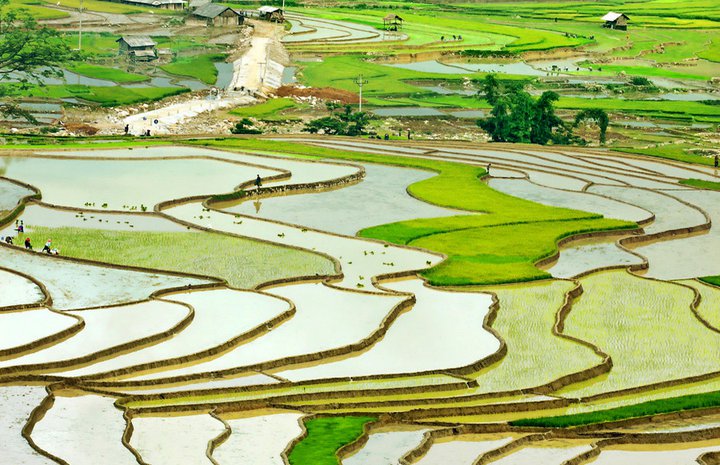
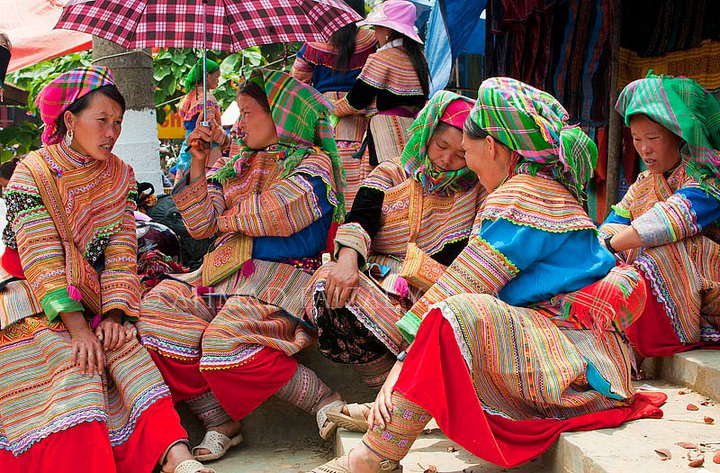
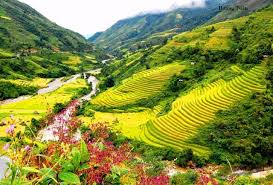
Rice terraced fields in Ta Van village Bac Ha market Muong Hoa valley
Sapa local villages: The first and must-see places in your Sapa Tours. The little villages embrace the town, Cat Cat, Lao Chai, Ta Van, Giang Ta Chai, Ta Phin... are home to various minority groups in Sapa. a vist to this village you will not only discover more about the daily lives of the hill tribes, their houses, their traditional and customs but you also have chance to see the beautiful sceneries on the way to the villages.
Love Waterfall: located in San Sa Ho commune, 4 km south west of Sapa and is on the way to “the rooftop of Indochina Fansipan”. This is a newly discovered tourist attraction with the height of about 100m, starting from the Fansipan peak and flowing into the Gold Stream beneath. The flow at the shape of a pyramid is becoming a romantic appointment for young couples to explore.
Ham Rong mountain: or “Flower mountain”, is at the centre of Sapa town, just opposite the Stone Church. The park is highlighted with a winding stone walkway up to the top of Ham Rong mountain. Along the road, visitors are glamoured with four season flowers in various types as well as intriguing stone statue gardens. Standing on the Cloud Yard at the height of 1800m above the sea level, one can feel the most panoramic vista of Sapa town and its surrounded valleys.
Fansipan mountain: The highest peak of Indochina at 3143m, be always a challenge for any adventure lover. To climb the mountain, you will need at least 3 days and of course, with the help of local porters and guides. On the way to conquer the mountain, one will be engrossed by great diversity of vegetation and animals on the Hoang Lien Son mountain range.
Sapa ethnic markets: One of the most interesting activities when visiting Sapa is to attend colorful ethnic markets in the remote districts from Sapa. This is chance not only for people to buy and sell their products but also for young boys and girls to make up and find their Mr/Ms Right. Some of famous ethnic market you should visit: Bac Ha Sun Day Market, Coc Ly tuesday Market, Cao Son Wednesday Market, Can Cau Staturday Market, Muong Hum Market...
Muong Hoa Valley: Muong Hoa Valley may be the most beautiful valley in the World,It's about 4 kms from Sapa and stretching about 15kms to Ban Ho Village, in the middle of the valley is Muong Hoa River, alot of local villages located along the valley with very beautiful terrace rice field. September is the most beautiful time of the year to visit this valley because the rice is ready for harvest, the yellow color of the rice and the sunshine on the terrace will make the valley look amazing.
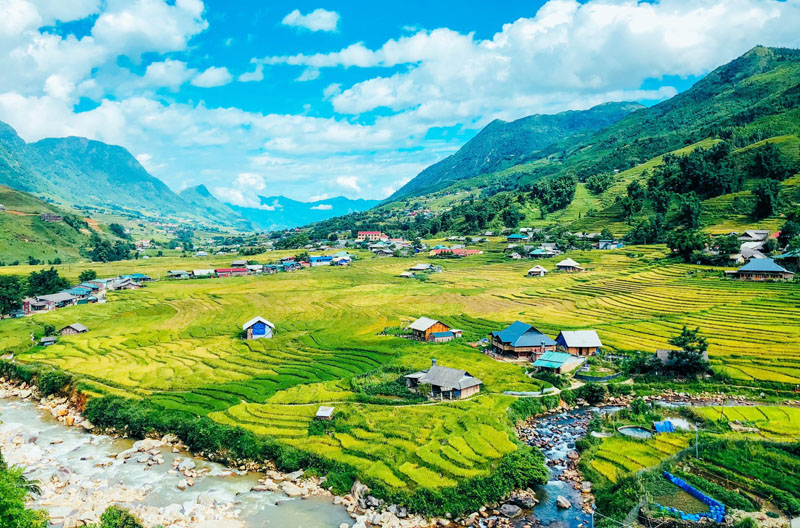
Muong Hoa Valley
Home Stay Tours: A homestay tour to villages is one of your best choices for visiting Sapa. You will trek down to the villages, stay in the local houses of the local minorities, far from busy cities, you will know better about the local minorities.
EAT & DRINK
Bamboo Sticky Rice ( Com Lam): This is a very popular dish in the North West Mountain of Vietnam but eating Com Lam with Grill pork bring you special taste in the cold of Sapa. How to make Com Lam? They put sticky rice with water inside a bamboo pipe then pup on the coal oven, when the dished is well cooed, they will remove the bamboo and you eat the rice. you can buy this at any shops on the streets in Sapa. at night time they sell a lot at the main square near the Church.
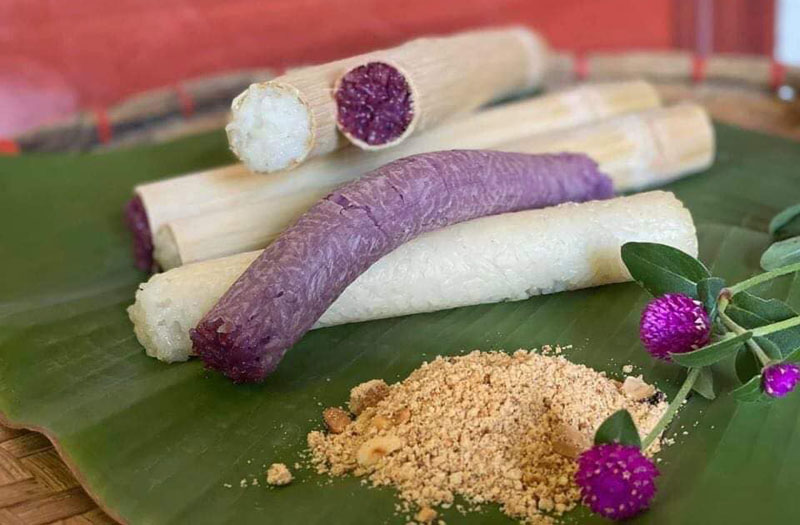
Bamboo Sticky Rice - Com Lam
Black Chicken: Black chicken is rarely found in the north, Black Chickens’ meat is sweet and delicious. It can be made into different dishes like boiled, steamed, fried. However, the most typical and favorite dish is grilled black chicken with honey. The honey is taken from the forest by the locals. The grilled black chicken is finished with perfect crispy skin, having a sweet and typical smell of forest honey. If you enjoy this dish in the cold days of Sapa, it will be truly a great dining experience.
Where to eat:
Viet Emotion Restaurant: 27 Cau May Str, Sapa
Xoi Bay Mau( Seven colour stiky rice): This is the original food of the Nung Din People in Muong Khuong District. This dish has seven colors such as pink, vermilion, scarlet, bright green, yellow green, banana leaf green and yellow and especially these colors is made from natural tree so you can totally feel secure when eating it. Besides, each color has own meaning. According to history of Nung Din people, each color in this steamed glutinous rice is one color of each month in the struggle of Nung Din people lasting from January to July here. Banana leaf green is the color of spring, scarlet is the color of blood of people who died for Nung Din people’s struggle, yellow is the color of agonies, vermilion is the color of the magnanimous victory of Nung Din People, etc.
Best restaurants for Xoi Bay Mau in Sapa:
Anh Dung Restaurant: 6 Xuan Vien Str, Sapa
Hoa Dao Restaurant: 48 Le Van Tam, Sapa
Am Thuc Sapa: Alley of 535 Xuan Vien Str, Sapa
Thang Co: This is the traditional dish of the Hmong People, Thang Co is made from horsemeat, horse’s viscera and horse’s bone. firstly they cut these parts into small pieces then fry them. After that they cooked them for many hours, this food is very attractive with very good smell from Thao Qua- a special herb of the local grown in Hoan Lien forest. the local men usually eat this meat and drink rice wine at every weekend in Sapa Market. this dish is now served in the restaurants but they make it cleaners for the tourists to eat.
Best restaurants for Thang Co:
Thang Co Anh Quynh: 15 Thach Son Str, Sapa
Thang Co A Phu: 15 Fansipan Str, Sapa
Cau May Restaurant: 92 Ngu Chi Son Str, Sapa
Rice wine/Corn Wine: They are local drinks made from rice and corn by the local, we can call it wisky because they are about 40-50% alcohol. Sapa is usually cold so the local men drink local wine to keep warm, but most of them drink too much. You can see them drunk alot at Sapa Market.
Salmon Sour Hot Pot: This is one of the most famous dishes in Sapa, the Salmon is group right in Sapa with very good quality. A hot pot of Salmon Sour with your friends and family in the cold weather of Sapa is very a good choice. You will eat with some add on such as tofu, local vegetables, chilli, lemon...
Where to eat:
Viet Deli Restaurant: 01 Le Van Tam Str, Sapa
Please click here for the list of Restaurants in Sapa
BAR & CAFE
The Sapa Lush Life Bar & Grill: Nightigale Bar & Pub is a favorite among travelers in Sapa. It features an open-concept kitchen where diners can see the chefs live in action. This all-day café offers breakfast, lunch and dinner options from pastas to buttermilk waffles and all-day breakfast plates French Toast with Fresh Berries, Eggs Benedict and Local breakfast.
Add: 27 Thach Bac Str, Sapa
Color Bar Sapa: Chilling bar in Sapa Center with beautiful traditional architechture of trible culture. Best drinks with reasonable prices
Add: 56 Fansipan Str, Sapa
The Hmong Sisters: The local go-to bar with live music, DJs, pool, fireplace and craft beer. Huge selection of cocktails and drinks. Chilled vibe and good music every day from 4:00 pm to late.
Add: 31 Muong Hoa Str, Sapa
Sapa Sky View Restaurant and Bar: Experience unforgettable moments at Sapa sky view restaurant & bar, while dinning delicious Vietnamese and Western cuisines, and enjoying spectacular views of the Hoang Liem Mountains and Muong Hoa Valley. You are also welcome to enjoy your desert or drink on the terrace, to get closer to majestic nature of Sapa
Add: 24 Dong Loi Str, Sapa
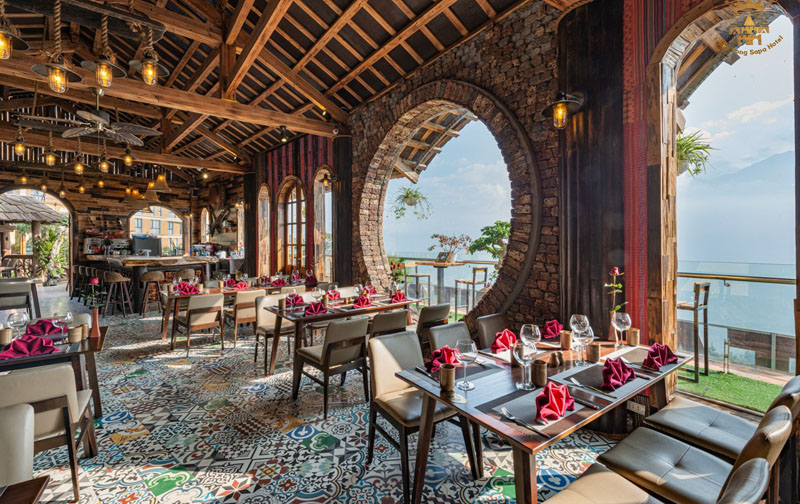
Sapa Sky View Restaurant & Bar
Ninety Pub: A nice bar with good food and drinks, free pool table
Add: 33 Fansipan Str, Sapa
Relax Bar: As Its name, you will feel relaxed when coming here. A nice bar with tradional local style, nice Dj music and exellent drinks.
Add: 72 Thach Son Str, Sapa

